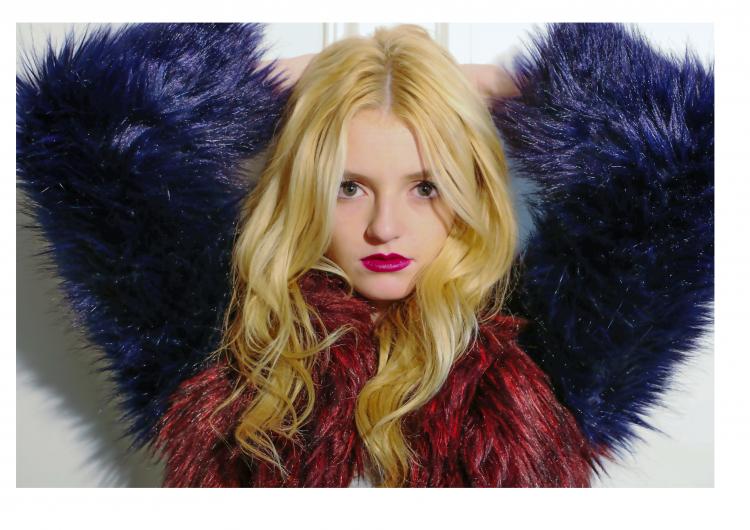A Fur Faux-Pas

Animal rights activists have worked for decades to exploit the unethical and inhumane methods in which fur garments are created. Perhaps most famously, PETA, or People for the Ethical Treatment of Animals, has gone to extreme lengths to show the world how awful the fur trade can truly be. The organization is not wrong; fur farms and hunters can be horribly cruel in their methods of the capture and the killing of animals. Many fur farms use the least expensive and most harmful killing methods possible. PETA's paint-throwing on fur at fashion week and “I’d Rather Go Naked Than Wear Fur” campaigns certainly made a bold statement, and viewing any of their graphic anti-fur videos could make almost anyone swear to be fur-free for life.
The organization's campaigns were not in vain. People responded to the anti-fur movement and the faux fur industry boomed. Organizations like PETA consider the “solution” to this issue to be synthetic fabrics and faux-furs, as it seems like a simple and easy cure-all fix to the issue.
Four decades later, faux fur has only improved in quality and style and is now available at almost any retailer in Paris and the world. The growth and popularity in faux fur brought attention to their production process and has since raised concerns. People can’t help feeling somewhat proud when wearing faux fur. Men and women alike wear their faux as a symbol of their ethical support of animal rights. It’s stylish, trendy, and good for animals and the environment. Is it, though? What if you were told that faux-fur came at an equally grave price?
Image Credit: Sasha SanchezFaux fur is made of non-renewable petroleum-based resources and then treated with heat and highly toxic chemicals. According to the International Fur Trade Federation, these industrial processes use three times as much non-renewable energy to produce as real fur. Similar to petroleum-based plastic bags, faux fur can take up to 1,000 years to decompose. Furthermore, every machine wash of a faux fur product releases about 1,900 microplastic particles into rivers, lakes, and finally the sea, which is eventually consumed by animals anyway.
Perhaps the most disturbing fact of all is that many faux furs consists of cat and dog fur. The Humane Society of the United States tested jackets in a production warehouse in China and 24 out of 25 contained either dog or cat hair. An estimated two million cats and dogs are killed each year in China for their fur, according to PETA.
The fur industry has been seeing rising success again in recent years. But does this mean that buying real fur is truly more eco-friendly than buying faux fur? One can't deny the central role fur companies have played in the campaign against faux fur.
Mimi Bekhechi, PETA's UK director, cited independent studies that show the impact of the creation of a mink coat on climate change as being three to ten times higher than the impact of a faux-fur coat. And, of course, it's difficult to justify the killing and trapping of animals for use of their fur. So the verdict seems to be in a gray area: both furs, faux or real, have negative effects on the environment.
Image Credit: Sasha SanchezSo which is worse? The debate is going to continue as it has for decades and the consensus is that neither of the furs are good. Nearly all can agree that if a fashion enthusiast is unwilling to give up the look and feel of fur, but is morally conflicted, that vintage is the way to go. Shopping vintage furs is one of the least detrimental and best possible options for our planet. Even if the fur is real, buying vintage fur does not put a demand on production of more fur. Paris has no shortage of vintage shops, making it easy to wear fur without harming more animals.
Another excellent option would be buying eco-friendly faux fur options, like pieces that are made with organic materials (cotton, bamboo or hemp). Some companies, such as M.Patmos, are making fake furs from wool, alpaca and other natural animal fibers, which cause no harm to the animal.
As young, style-conscious Parisians, it is important to know the facts. So choose wisely: there are fashionable and eco-conscious alternatives to both fur and faux fur.









